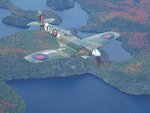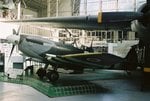Jank said:
Seriously though, the Genev Conventions does not prohbit the use of the .50 BMG on people. Just because the military has a policy doesn't mean that policy is rooted in the Geneva convention. American snipers have been using the .50 against persons for years now. Look at this link . (Do not open it if you are not prepared for a very graphic image.)
http://poetry.rotten.com/failed-mission/failed-mission.jpg
Use of heavy caliber machine guns aganst troops, whether from a sniper rifle, atop a tank or on fighter aitrcraft, has never shocked the conscience of the combatants in war.
You are more than likely correct. I can not quote a paragraph or page or anything. It is more than likely not an actual law. It is however during our Geneva Convention training pretty much stated in our policy on the .50 Cal. Now as you said Snipers do use the .50 Cal and yes in an actual combat situation I would have no problem using a .50 Cal on people.



